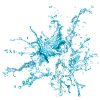Apps that scan your cosmetic products and tell you exactly which ingredients are in it and if it is potentially toxic for us or not: that’s heaven, right?
Heaven indeed, meaning not from this planet yet. Those apps are not doing what they promise, not even close.
We’ll go through their inconsistencies in more details below but what most shocked us was that they completely ignore the European laws. As a reminder, each cosmetic product placed on the European market must:
- Be notified on the CPNP, the Cosmetic Product Notification Portal where all cosmetics should be registered before receiving a unique CPNP number.
- Have a Product Information File (PIF) containing all tests and documents linked to the ingredients and the finished product as well as a safety assessment signed by a Safety Assessor who engages his/her personal responsibility.
- Have a responsible person having its seat within the European Union.
When a product checks the second point, it is automatically certified to be safe for human health by a professional in toxicology. Therefore, no need for the consumers to begin to scan the INCI lists themselves since a sound professional will have done it for them. But how do we know if a product has a PIF? There is absolutely no way. Isn’t it great? But that will be the topic of another article. Let’s now focus on the reasons why those apps are so inefficient.
A lack of reliable data
On the 800 000 cosmetic products currently estimated now on the European market, 10% are new arrivals that are unknown from database that the apps are using to function. For the rest, the vast majority is going to change formula in the next 3 years. However, even when the formula changes, the bar code doesn’t, which means that the apps are not scanning the formula that is indeed inside a product, but a formula that was entered in a database when the product was first put on the market.
A lack of knowledge in the regulation and formulation of cosmetics
All apps currently on the market have been created by private companies who have not been accompanied by professionals to create them. It’s a big problem because it means they have no legitimacy to judge de formulations of the products because they are neither neutral government structures, nor associations of sound professionals of the cosmetic industry or even private companies who, by miracle, would have had access to the exact formulation to be able to assess the safety of a product.
At no point the concentration of ingredients is considered, yet, it is vital to be able to determine the dangerous nature of an ingredient. Every good toxicologist will tell you that “it’s the concentration that makes the poison”. If this data is not available, it’s simply because it’s the private turf of the cosmetic brands who have been working in their labs for months to be able to come up with a unique formulation. You don’t know the exact formulation of the Coca-Cola neither, do you?
Last but not least: the apps don’t take into account the use of the products themselves. The formulation of a shampoo that will go down the drain after 5 minutes can contain ingredients that a leave-on cream you will wear all day long cannot. Here again, it would have been opportune to add nuances, but nothing in sight.
Obviously, this lack of knowledge about the cosmetic formulation and regulation cannot reasonably give reliable results.
Inconsistencies and vague assessment methods
A same product can be differently noted by different applications, which leave us a bit perplex on the assessment methods used by each app. On that note, we also noted that none of the assessment methods is clearly defined by any of them.
Finally, the database used by the apps are not being updated regularly and some are even being updated by consumers themselves, which increases the margin of error.
Everybody’s in the same boat
Should you be a child, a pregnant lady or a man allergic to Linalool, the apps don’t make the difference. Let’s take a concrete example to explain our point: there are 26 allergens that need to be listed on the label of cosmetic products. Those substances, coming from nature for the majority of them, might cause allergic reactions to people who are sensitive to them. In other words, they have no undesirable effects on other people. Yet, the apps are rating allergens as dangerous substances, which devalued products containing them.
As a conclusion and as you have already understood, those apps are only successful because they surf on the marketing of fear, so fashionable at the moment. It’s healthy that people are try to be more conscious about what they consume but in this case, those apps are not a valuable partner since they are neither reliable, nor credible.
The solution to truly make a difference would be to create an app able to show if a product has a PIF or not, to name the responsible person and the Safety Assessor who worked on the safety assessment of the product. We could also add some notification of allergens to help allergic people to avoid certain products and rate the sustainability of the product. It’s only with such a tool that we would be able to be fully transparent and true to the consumers. If there is any tech geek in the room, we are sure there is some business here!



